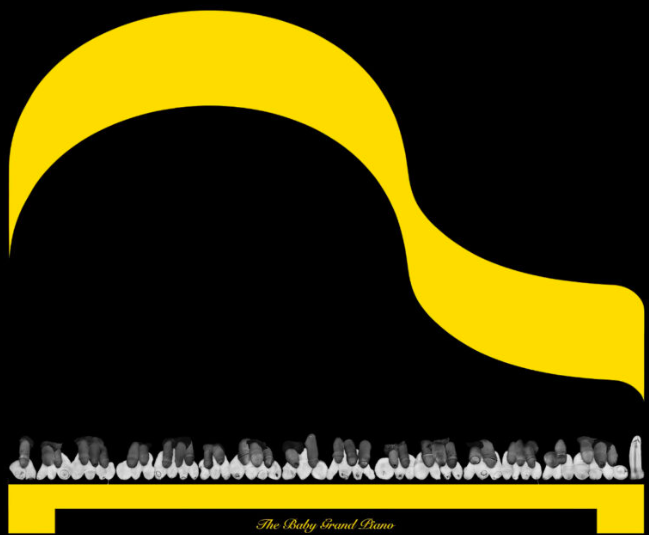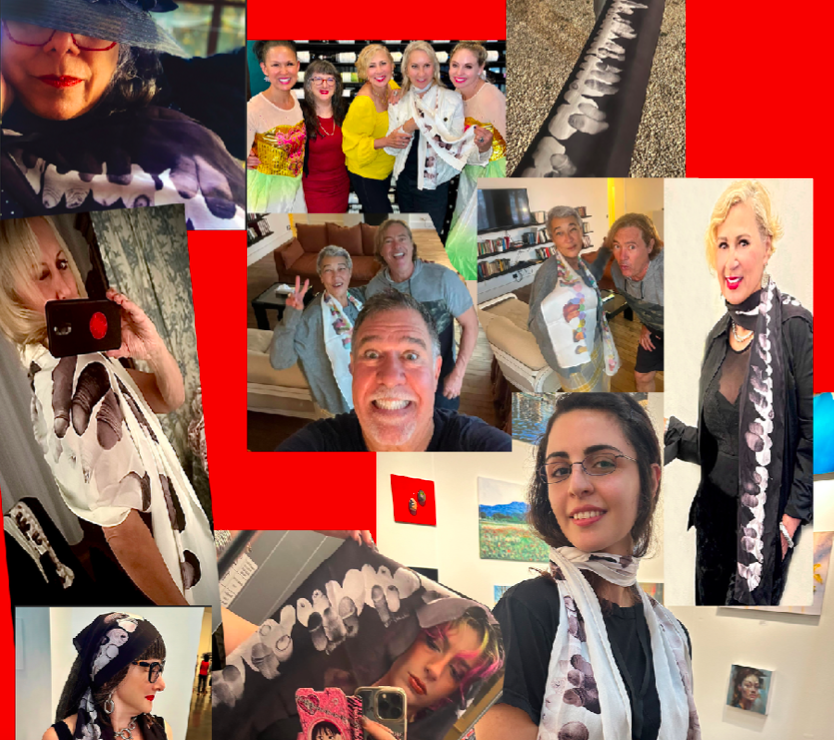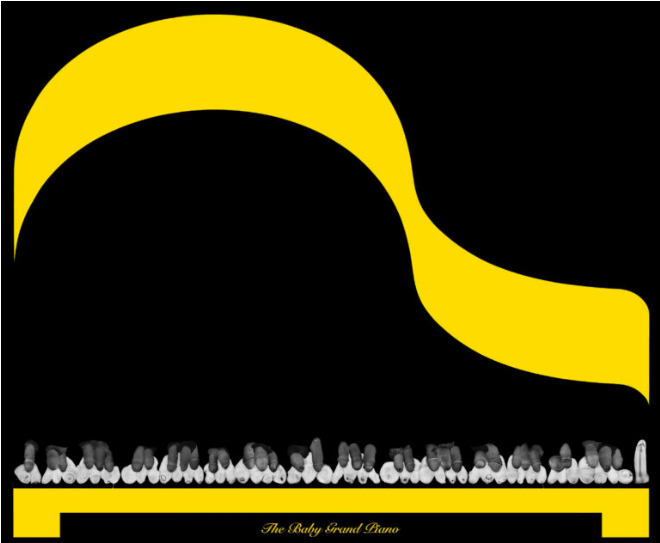Cynthia Karalla operates on the fringes of reality, blending traditional art forms with experimental provocations. An alchemist at heart, she reimagines the familiar and reshapes the conventional. With roots in architecture and photography, Karalla’s artistic journey is a testament to transformation. Her work is a process of reframing—turning negatives into positives, much like developing film. Photography, for Karalla, is a medium for redirecting perception, pushing viewers to question the sensible.
One of her works, The Baby Grand Piano, exemplifies her philosophy. Through this piece, she invites viewers to engage with difficult questions and unearth fresh perspectives on power, sexuality, and cultural norms.
The Baby Grand Piano: A Confrontation with Taboo

Cynthia Karalla’s Baby Grand Piano pushes the boundaries of art and societal comfort. This photomontage transforms a highly personal subject into a universal metaphor. The piano, measuring either 72 inches or 144 inches, is constructed from photographs of 88 penises—52 white and 36 black. It took Karalla two years of meticulous planning, study, and photography, conducted across Southern Italy and New York City, to create this work. The result is a seven-octave keyboard, as functional as it is provocative.
Karalla’s approach to The Baby Grand Piano stems from her upbringing in a family entwined with the Vatican. The rigid structures of chastity, control, and gendered power shaped her early understanding of relationships and authority. These themes underpin her exploration of the penis as a taboo subject—viewed in many societies as something that should not be openly seen, discussed, or understood.
By assembling these images into a functional metaphor for music and creation, Karalla challenges viewers to reconsider their cultural and personal attitudes toward the body and power dynamics. Her work dares participants to confront their discomfort and interrogate the cultural myths surrounding masculinity, sexuality, and identity.
Women, Men, and the Creation of a Transgressive Community

The process behind The Baby Grand Piano is as thought-provoking as the work itself. Women played an essential role, organizing and convincing men to participate as anonymous “donors.” In this act, Karalla highlights how societal dynamics often demand women’s labor to facilitate male engagement. The facelessness of the male participants removes class and identity from the equation, reducing the subject to its core: a symbol of cultural and personal power.
Karalla’s work isn’t about shock value but transformation. By taking a subject typically avoided or controlled and placing it in a new, creative context, she encourages viewers to experience a moment of transgression. This isn’t transgression for its own sake—it’s about liberation from inherited taboos. For Karalla, the act of confronting the taboo is an invitation to reimagine restrictive societal structures.
Art as a Mirror of Power Dynamics
The Baby Grand Piano is more than an artwork; it’s a mirror. The juxtaposition of black and white keys mirrors the racial and social divides embedded in cultural systems. The keyboard itself becomes a metaphor for binary systems of understanding—race, gender, and power—asking whether these systems serve as instruments of harmony or division.
For Karalla, the act of playing the piano symbolizes interaction with these structures. A woman touching the keys becomes a metaphor for how women navigate systems designed to subjugate. The music produced, whether harmonious or discordant, represents the consequences of that interaction. The work asks whether it’s possible to rewrite the score, to transform an object of control into a tool for liberation.
The Dream That Shaped the Vision
The genesis of The Baby Grand Piano came to Karalla in a dream. In Paris, under the looming presence of the Sacré-Coeur Basilica, she envisioned a piano composed of penises. The absurdity of the image initially seemed like a joke, but its deeper meaning unfolded over time. It became a reflection of her upbringing, where control over women’s bodies and desires was wielded as a tool to shape men’s behavior and societal order.
This dream revealed the interconnectedness of personal and collective histories, urging Karalla to create a metaphorical object that both encapsulates and challenges these power structures. By turning the dream into reality, Karalla converted personal exploration into a communal experience, opening space for dialogue and reflection.
From Control to Creation
The Baby Grand Piano represents a shift from control to creation. Karalla’s work suggests that true liberation comes not from rejecting the structures that shape us but from transforming them. The piano, a metaphor for cultural power, becomes an instrument of expression. Playing it becomes an act of resistance and reimagination.
Karalla challenges us to consider what it would mean to live outside the constraints of inherited taboos. Her art doesn’t dictate answers but opens doors. It’s an invitation to play—to reframe the song, to embrace transgression as a path to understanding and growth.
In The Baby Grand Piano, Cynthia Karalla offers not just an artwork but a tool for transformation. Through her lens, taboos become opportunities, and control becomes a canvas for creativity. This is the gift of her art: a chance to rewrite the music of our lives.

